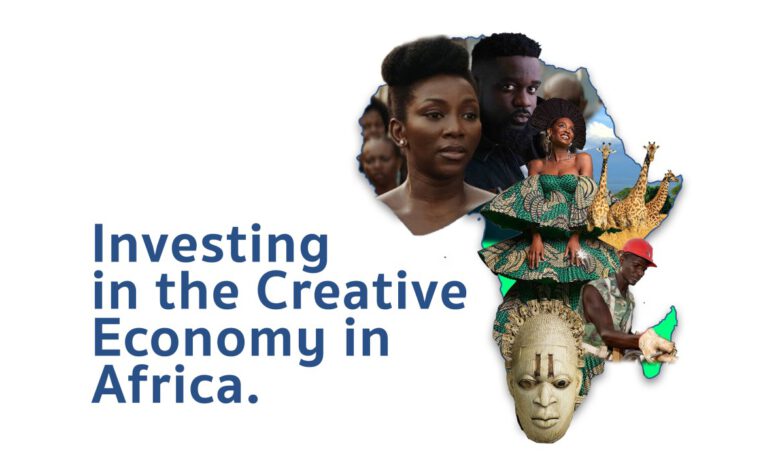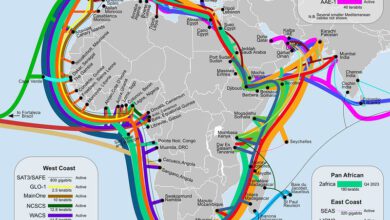Can Tech Sustain Africa’s Creative Economy?

A friend of mine who lives in Lagos went viral recently, apparently, she always spend her nights designing bold Afrocentric prints for tote bags for years with just her phone and 4G Wi-Fi.
But on this particular day, she just shares her work on Instagram at night and wakes up to orders from London. This isn’t luck. It’s the new face of Africa’s creative economy, where opportunity meets talent. so let’s answer the possibility of tech sustaining Africa’s creative economy. Grab a coffee and let’s explore.
How Tech Is Empowering Africa’s Creative Economy
The creative economy isn’t just about talent it’s about turning culture into capital. In Africa, it includes everything from Afrobeats tracks topping global charts to streetwear brands reshaping fashion in Lagos, from digital art minted as NFTs to Nollywood scripts streamed worldwide.
In this context, the “creative economy” refers to industries built on individual creativity, skill, and cultural expression, such as music, film, fashion, art, publishing, design, photography, crafts, gaming, and digital content. What makes Africa’s version unique is its fusion of deep-rooted traditions with cutting-edge innovation and a youthful population pushing both to new heights.
According to a report by Jobberman, Nigeria’s creative industry alone contributes over $4.5 billion to the country’s GDP and has the potential to create 2.7 million jobs by 2025. UNESCO also estimates that Africa’s cultural and creative sectors already employ nearly 8.8 million people, many of them under 35.
What’s driving this growth? Tech. Platforms like Instagram, YouTube, TikTok, Spotify, Audiomack, and Selar have lowered the barriers to entry for Gen Z creators, helping them build audiences, monetize their work, and gain visibility beyond borders. In Nigeria, for instance, a report by Statista showed a steady rise in digital music revenue, expected to surpass $40 million by 2026, thanks to mobile streaming and youthful demand.
E-commerce is playing a role too. Fashion designers now sell directly to consumers via WhatsApp or Shopify, while digital artists use NFTs or online galleries to reach global collectors. It’s a new kind of hustle built on passion, data, and digital access.
Creatives often face challenges like limited access to startup capital, poor internet infrastructure, rampant piracy, and a lack of formal structures for royalties and copyright protection. Many still struggle to scale beyond social media, or turn viral content into sustainable income.
Yet despite these hurdles, the creative-tech economy remains one of the most promising frontiers on the continent. It’s not just about entertainment anymore; it’s about digital entrepreneurship, cultural exports, and a growing wave of African creatives building global influence from local roots.
Can Tech Truly Sustain Africa’s Creative Economy?
In the past, if you were a creator in Africa especially in smaller towns, your income depended on live events, local markets, or hoping a big city brand noticed you. But even the most talented storytellers, artists, and performers were often stuck in a loop of unpaid work and invisible effort.
But then, something changed; technology and civilization allowed tech platforms like YouTube to lead the way, giving creators a slice of ad revenue as early as 2010. It wasn’t perfect, but it showed that creativity could pay digitally.
Fast forward to 2022, and Facebook launched its content monetization features across 20 sub-Saharan African countries. X (formerly Twitter) followed in 2023 with its ad revenue-sharing program. Suddenly, likes and shares weren’t just validation but a potential income. Audio platforms like Spotify made it possible for musicians to reach fans across continents.
But the change didn’t stop at digital content. Platforms like Selar began empowering creators to sell courses, art, fashion, and ebooks all without needing a store or middleman. In 2023 alone, Selar reported that collective earnings of African creators on its platform doubled. And for artisans and entrepreneurs crafting tangible products like beads, fabrics, sculptures, and handmade leather goods, platforms like ANKA stepped in to bridge the global gap.
A picture of how ANKA platform looks like
With a mission to help African creatives export directly to the world, ANKA has processed over $50 million in exports to 175 countries, supporting more than 20,000 creators from 46 nations.
Where traditional systems once blocked access, technology is removing the gatekeepers. A beadmaker in Senegal, a fashion designer in Eldoret, or a voice artist in Bamenda now has a chance to be seen and get paid for their work.
And the world is watching. Global interest in African creativity is growing. Even major gospel artists are setting up homegrown record labels to anchor their roots in Nigeria’s booming music scene.
Conclusion
More than just connecting African innovators to other parts of the globe, technology has helped them see they belong there. From music to fashion, art to narrative, internet platforms have provided new opportunities to earn, grow, and be recognized.
However, in order to keep the trend going, we need more than just likes and links. We need access, assistance, and strategies that benefit everyone, not just the famous names in major places. The future of Africa’s creative economy is more than simply a possibility. It is already here.






